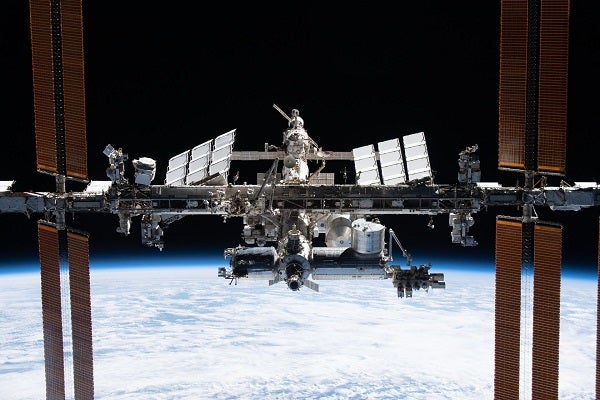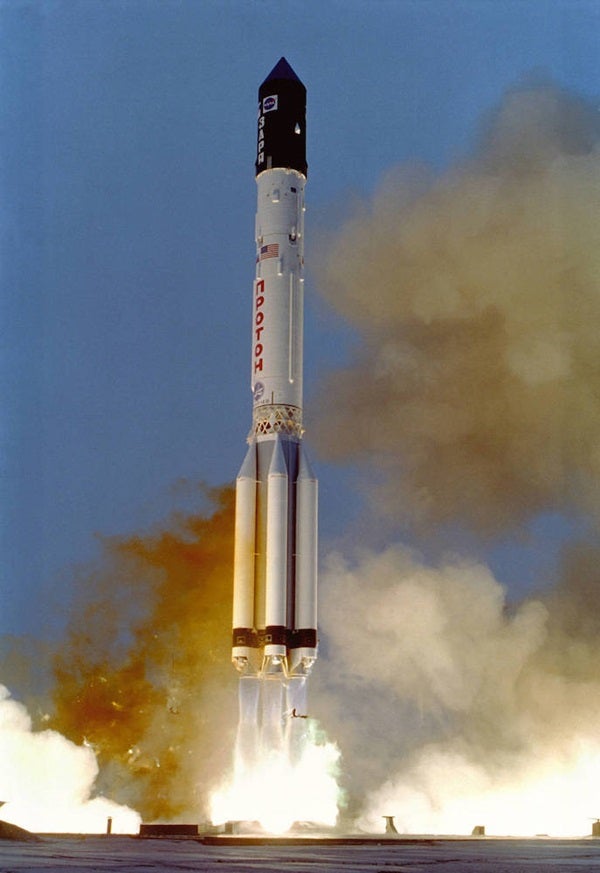The first piece of the International Space Station (ISS) was launched back in 1998. That initial segment, called the Zarya Control Module (meaning “Sunrise” in English), was funded by the U.S. but built and launched by Russia. Coming just seven years after the breakup of the Soviet Union, the historical launch marked the beginning of a multi-decade partnership between the two previously bitter Cold War rivals.
However, it appears that after nearly three decades of cooperation, Russia is keen to turn its attention away from the ISS. According to a report issued to Russian President Vladimir Putin by Yuri Borisov, the new head of Roscosmos, Russia will be withdrawing from the space station after 2024. The announcement comes from two Russian state-run media agencies: TASS and RIA Novosti.
The change in Russian space priorities is particularly surprising considering that less than two weeks ago, on July 15, NASA and Roscosmos signed an agreement to fly each other’s astronauts to and from the ISS.
The news also seems to have been a surprise to NASA, as well as the public. According to a tweet by Marcia Smith of SpacePolicyOnline.com, ISS Director Robyn Gatens told reporters at the ISS Research and Development (ISSRD) conference today that no official note had reached NASA of Russia ending its participation in the ISS by 2024. But Gatens suspects, like the U.S., Russia is looking ahead to the transition away from the ISS in the early 2030s, at which point the ISS will be decommissioned.
A long history
American plans for the permanently crewed space station date back to 1984. NASA quickly penned agreements with both the European Space Agency (ESA) and Japan’s National Space Development Agency (NASDA; now JAXA) to provide research modules. By 1988, the U.S., Japan, Canada, and nine ESA member states had signed an Inter-Governmental Agreement (IGA) for construction on what was then called Space Station Freedom.
During this time, the Soviets were operating their own Mir space station, which first launched in 1986. But when the Soviet Union collapsed in 1991, Mir and its planned successor, Mir-2 were thrown into uncertainty. Two years later, President Bill Clinton invited the newly formed Russia to join the Space Station Freedom program.
Leading up to the ISS, several U.S. astronauts joined Russian cosmonauts aboard Mir. An updated IGA was signed in 1998, and just 10 months later, Russia launched the Zarya module. Ever since, the ISS has been a beacon for both science and international cooperation.
Shifting priorities
The news of Russia leaving the ISS comes as the world enters month six of Russia’s latest invasion of Ukraine. As a result of its aggression, Russia has been heavily sanctioned by the international community, straining cooperation.
Previously, Russia has indicated plans to create their own space station — most recently the Russian Orbital Service Station (ROSS) — indicating that they would pull out of the ISS in 2025 due to its aging structure.
On April 21, 2021, TASS reported that under the former Roscosmos Director Dmitry Rogozin, Roscosmos was interested in using a research and power unit initially developed for the ISS as the basis for a new outpost. Rogozin was replaced by Borisov on July 15.
Similar plans surrounding ROSS appear to already be underway, with Borisov emphasizing in both the TASS and RIA Novosti press releases that ROSS was now the main priority of the Russian Federation when it comes to crewed spaceflight.











